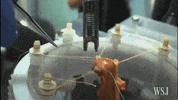Activity
Mon
Wed
Fri
Sun
Oct
Nov
Dec
Jan
Feb
Mar
Apr
May
Jun
Jul
Aug
Sep
What is this?
Less
More
Memberships
EJM FutureTech Innovators
30 members • Free
Franzese Family
935 members • $20/m
1 contribution to EJM FutureTech Innovators
Tissue Engineering Market Growth: USD 15.8 Billion in 2025 to USD 34.6 Billion by 2031
Tissue engineering represents a groundbreaking interdisciplinary field that combines principles of biology, chemistry, engineering, and medicine to develop biological substitutes that restore, maintain, or improve tissue function. This revolutionary approach involves creating functional tissues and organs using a combination of cells, scaffolds, and growth factors, offering unprecedented solutions for patients suffering from tissue damage, organ failure, or genetic disorders. The tissue engineering process typically involves three key components: scaffolds that provide structural support, cells that form the basis of new tissue, and signaling molecules that guide cellular behavior and tissue development. This innovative technology holds immense promise for addressing the critical shortage of donor organs and providing personalized treatment options for various medical conditions. Market Value and Insights The global tissue engineering market has experienced remarkable growth, with the market valued at approximately $13.9 billion in 2023. Industry projections indicate the market will reach $35.1 billion by 2030, representing a robust compound annual growth rate (CAGR) of 14.2% during the forecast period. This substantial growth trajectory reflects increasing healthcare investments, technological advancements, and growing awareness of regenerative medicine benefits. North America currently dominates the tissue engineering market, accounting for approximately 40% of global revenue, followed by Europe and Asia-Pacific. The Asia-Pacific region is expected to witness the fastest growth due to improving healthcare infrastructure, increasing research activities, and rising healthcare expenditure in emerging economies. Market Growth Factors Several key factors are driving the expansion of the tissue engineering market. The aging global population and increasing prevalence of chronic diseases create substantial demand for innovative treatment solutions. Rising cases of organ failure, cardiovascular diseases, and orthopedic injuries necessitate advanced therapeutic approaches that tissue engineering can provide.

2 likes • 2d
I want to get involved one way or the other with the child liberation foundation operation freedom fighter did you see that video with Michael Frances? I have no idea Jerry how bad things were and Michael the only one that keeps talking about it and he’s not gonna let it go and I am so so grateful to be a part of this community for that alone, but would love to generate finances in order to help people in whatever way I can. This is a prayer come true for me.
1-1 of 1
@michael-and-deborah-burroughs-1942
I live in Orlando Florida. I am a Christian and a republican and I’m 75 and excited to be joining this community.✝️💜🙏
Active 5h ago
Joined Sep 24, 2025
Powered by


